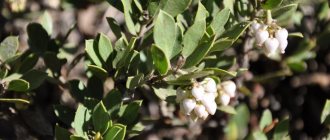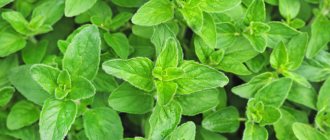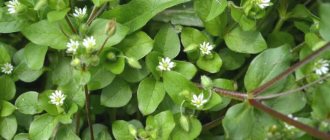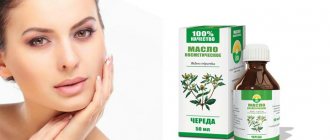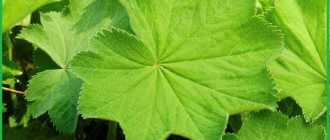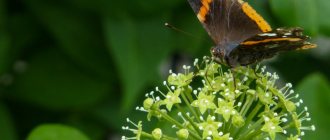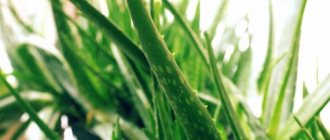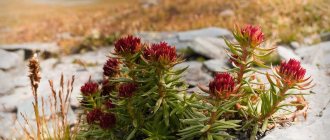Common bearberry (bearberry, bearberry, bear's ear, bearberry, tormento) is a creeping evergreen shrub from the Ericaceae family, very similar to lingonberries. It grows in Siberia, the Caucasus, the Far East, and is also found in places in the sandy tundra. Distributed in North America, Northern Europe. It is also found in Central and Southern Europe: in the Alps, Apennines and Balkans.
Prefers dry pine forests, deciduous forests, birch-larch woodlands, glades, grows well on predominantly sandy soil, with sufficient access to sunlight. It colonizes clearings and burnt areas well, growing on seaside rocks and gravelly places. With insufficient moisture, its growth slows down, the leaves become rough and brown, and then the leaf shoots die off altogether. The peculiarity of the plant is the presence of endo- and exotrophic mycorrhiza, therefore for growth there must be mycorrhiza-forming fungi in the soil. It does not tolerate competition with other plants and grows in clumps within its range.
The medicinal properties and contraindications of bearberry have been known for a very long time, which allows the plant to be used in official and folk medicine.
Compound
Each filter bag contains 1.5 grams of plant material from bearberry leaves in powder form.
The leaves of the plant contain 8-25% ericoline arbutin glycoside ), about 30% tannins of the pyrogall group, flavonoids ( isoquercitrin , quercetin , hyperoside , quercitrin , myricitrin and myricetin ), ursolic acid , hydroquinone in free form, essential oils and a number of acids ( ascorbic acid , formic acid , cinchonic acid ). The leaves contain a fairly large amount of iodine , essential amino acids and nitrogenous substances.
Morphological description
The height of the bush is 5-30 cm. The stems are branched, recumbent, rooting and ascending. The leaves have an oblong, obovate shape. At the base they are narrowed into a short petiole, and at the top they are rounded. Dark green above, shiny, with visible veins, matte and lighter below. The leaves have a solid edge, without edges, and are arranged alternately: they live for 2 years, and in the 3rd they die and fall off.
A distinctive feature of lingonberries is small brown dots on the back of the leaves. Knowing this feature, plants can be easily identified in nature.
Blooms from April to June. The inflorescence is a small apical raceme, consisting of several drooping white-pink flowers on short pedicels. The corolla itself is pitcher-shaped, has a five-toothed bend, and there are hard hairs inside. The anthers with appendages are dark red in color and open with holes at the top. The style is somewhat shorter than the corolla.
The fruit ripens in August-September and is a berry-shaped drupe of dark red color with a diameter of 0.6-0.8 cm. The pulp is mealy, inside of which there are five seeds.
pharmachologic effect
Bearberry leaves contain a number of organic acids and a set of flavonoids , but the main therapeutic effect is provided by the arbutin glucoside contained in the plant. After entering the human body, arbutin, as a result of hydrolysis, breaks down into hydroquinone (diatomic phenol) and glucose. Hydroquinone has an antiseptic effect and has a diuretic and diuretic effect .
The most active process of arbutin breakdown is observed in the urinary tract (alkaline hydrolysis, contact with uric acid), therefore the main properties of bearberry leaves are used in the treatment of nephrological pathologies ( pyelitis , nephritis , urethritis , cystitis and other inflammatory processes in the bladder or renal system) . The medicinal properties of bearberry leaves have also been used for diseases of other organs and systems ( gastritis , goiter , etc.).
Bearberry decoction contains tannins, which have an astringent effect in the digestive tract. Experiments on rats showed that the plant is also an antihypoxic agent (the survival rate among animals increased under hypoxic ).
Hydroquinone is able to increase the activity of redox processes. Under its influence, O-methyltransferase is blocked, which makes it possible to prolong the action of adrenaline . Experimental studies have shown that hydroquinone has a positive effect on metabolism, the ability of tissue to absorb oxygen, normalizes the level of glutathione , potassium and glucose in the blood, neutralizes diabetic ketoacidosis , and in a number of shock states exhibits a hypertensive effect .
Bearberry: contraindications for use
Bearberry herb has some restrictions for use. Before starting treatment, you should definitely talk to your doctor. During the consultation, the doctor will tell you what bearberry is, what it helps with, and how it should be taken correctly.
Based on urine and blood tests, the doctor will give permission or prohibition to use the herb. It can only be consumed under the supervision of a specialist, strictly following the prescribed dose.
Bearberry leaf has the following contraindications:
- lactation;
- renal failure;
- short-term constipation;
- allergy;
- individual intolerance to plant components.
Additionally, bearberry is prohibited for children under 12 years of age. If you use a large amount of the product, serious side effects may occur:
- nausea and gag reflexes;
- fever;
- pain in the back;
- diarrhea;
- dehydration of the body;
- worsening inflammation;
- the appearance of vascular fragility;
- decreased cardiac tone;
- blood pressure disorders.
When used correctly in combination with classical medicine, medicinal decoctions from bearberry will help get rid of the symptoms of diseases and reduce the damage done to the body.
You should know that bearberry, a photo of which is easy to find on the Internet, is not taken together with antibiotics. The use of tinctures from the plant with alcohol during a diet for weight loss can provoke disturbances in the functioning of the kidneys. Despite the fact that bearberry extract does not stop the effect of vitamin complexes, it removes them along with the liquid. Therefore, be sure to discuss their combination with your doctor.
Bearberry, the use of which has a positive effect on the body at the correct dosage, is also not recommended for use if:
- perforated ulcer;
- acute urolithiasis problems;
- pancreatitis;
- diabetes mellitus;
- leukemia;
- advanced psoriasis;
- disturbances in the functioning of excretory processes;
- excessive body weight.
Bearberry can be prescribed to pregnant women, but the course is selected on an individual basis, since a double load is placed on the female body. The herbal medicine is prescribed, but with a reduced dosage.
Bearberry leaves, instructions for use (Method and dosage)
The medicinal plant is used in medicine in the form of a decoction or infusion 40 minutes after eating. Depending on the severity of the underlying disease, 45-75 ml per day is prescribed. Duration of therapy is 20-25 days. The course can be repeated after 10 days. You can take no more than 4 courses per year. It is recommended to shake the decoction and infusion thoroughly before ingestion. The prepared solution can be stored for 2 days in a cool place.
Preparation of the decoction: 1 filter bag is placed in a special container (glass, enamel), poured with boiled hot water in a volume of 200 ml and covered with a lid. Keep in a boiling water bath for 30 minutes. After cooling, the solution is filtered and the plant material is squeezed out. The volume of the resulting solution is adjusted to 200 ml with boiled water. The infusion is prepared according to a similar scheme, only heating is carried out for 15 minutes, and cooling until squeezing and filtering is carried out for 45 minutes.
History and scientific research of bearberry
- The first mentions of the medicinal properties of bear's ear date back to the 12th century - then it was already used in England: in the Old English medicinal book “Meddygon Myddfai” a description of the properties of the plant is given.
- In medieval medicine of the Armenian peoples, torment was used as an astringent for diarrhea and hemoptysis.
- Bearberry received recognition in Germany as a medicinal plant only in the 18th century.
The German public health service recognizes bear's ear as one of the effective remedies for the treatment of inflammatory processes of the urinary tract.
- Instructions for the use of bearberry in scientific and practical medicine in France date back to the 20s. 20th century The famous herbalist in this country, Leclerc, recommended the plant as a diuretic and anti-inflammatory drug for pathologies of the kidneys, bladder and prostatitis.
- In folk medicine of Siberia and the North of Russia, bearberry was used for pathologies of the urinary system, for the treatment of sexually transmitted diseases - syphilis and gonorrhea. Moreover, in a number of localities in Russia the plant is still used for this purpose.
- In Lithuanian folk medicine, the plant was used in the treatment of chronic diarrhea, hypertension, neuroses, to tone the body, and eliminate inflammatory processes.
- Tibetan healers use the leaves of the plant for heartburn, Graves' disease, and gastritis.
- Ukrainian herbalist Nosal V. recommends plant preparations for urinary incontinence at night in children.
- Czech scientists have developed a technology for culturing mesophilic cells of bearberry leaves. However, arbutin and other phenol glycosides do not accumulate with this method, and the active base is represented by triterpene compounds derived from oleanolic acid.
- In 1974, at the Chemical-Pharmaceutical Institute of St. Petersburg, a method was developed for obtaining a liquid concentrate from a plant leaf that contained up to 15% arbutin. In experiments conducted on laboratory rats, it was found that the drug increased diuresis by 37%.
- In vitro experiments have proven that plant leaf extracts inhibit the growth of Staphylococcus aureus, Enterobacter aerogenes, Enterococcus faecalis, Bacillus subtilis, Salmonella typhimurium, Escherichia coli, Proteus vulgaris, Proteus mirabilis, Ureaplasma urealyticum, Serratia marcescens, Pseudomonas aeruginosa, Streptococcus mutans and Mycoplasma hominis .
- In 2001, Japanese scientists found that bearberry extract increases the sensitivity of St. aureus (methicillin-resistant strains) to β-lactam antibiotics.
Analogs
Level 4 ATX code matches:
Renel
Samprost
Lingonberry leaves
Uriflorin
Gentos
Bioprost
Testis compositum
Birch buds
Lespefril
Prostopin
Lespeflan
Phytonephrol
Lespenefril
Canephron N
Vitaprost Forte
Vitaprost Plus
Vitaprost
Brusniver
Speman Forte
Speman
Uriflorin.
How to distinguish bearberry from lingonberry
Very often, dried lingonberry raw materials are given out under the guise of bearberry and sold in markets. There will be no harm from such treatment, but there will also be no benefit to the expected extent.
Even in the 8th century pharmacopoeia, a technique for analyzing medicinal raw materials to determine falsification was described. An aqueous infusion is prepared from the tested raw material in a ratio of 1:50, then a crystal of iron sulfate is added to it. If the tested raw material is bearberry, then the solution should first turn red, then turn purple, and after the end of the reaction a dark purple precipitate should appear. If it is a lingonberry leaf, such a reaction is not observed.
The second method requires the presence of ferroammonium alum, when a few drops are added to the bearberry infusion, the latter acquires a black-blue color. If the infusion is made from lingonberries, it will turn green-black.
Author:
Sabuk Tatyana Leonidovna hygienist, epidemiologist
Reviews of Bearberry Leaves
Infusion and decoction allow you to quickly relieve the unpleasant symptoms that accompany most diseases of the urinary tract: itching and pain when urinating, discomfort in the lumbar region. Patients note a significant improvement in overall well-being after the first doses of the solution. Reviews of allergic responses in predisposed patients are rare. Bearberry leaves are a good addition to the main treatment of urinary tract diseases.
Collections with bearberry and recipes for certain diseases
Collection for the treatment of neuroses, insomnia
Mix bear's ear and motherwort grass in equal parts. Take 2 tbsp. mixture, add 3 cups of water to them and place everything in a saucepan and in a water bath. Cook until the liquid has evaporated by 1/3. Cool and strain.
Take 50 ml before meals (before each meal).
Collection for the treatment of cystitis
Mix 20 gr. hernia and bearberry, add 5 grams to the mixture. dried parsley and the same amount of celandine. Grind the plant mixture and add 1 cup of boiling water to it, leave for 60 minutes.
Take 3 times a day, 30 minutes after meals, 50 ml.
Diuretic collection
Take bearberry leaves, licorice root and cornflower flowers in a ratio of 3:1:1. Add 1 tbsp to 250 ml of boiling water. this mixture and leave for 20 minutes.
Take 1 tbsp. three times a day.
Recipe for gout
Pour 500 ml of water into a saucepan, put 3 tbsp. dry bearberry leaves, put on fire and wait until it boils. Simmer for 15 minutes, remove from heat and cover with a lid, wait until it cools down. Strain.
Take with meals, 2 times a day. You can also moisten a gauze bandage in this decoction and apply it to sore spots for 15 minutes. This treatment is carried out until the pain completely disappears.
Collection for pyelonephritis
Take 10 grams of bearberry leaves, birch leaves, horsetail grass, licorice root and 20 grams of lingonberry leaves, flax seeds and nettle herbs. 1 tbsp. Pour 200 ml of boiling water over this mixture, heat in a water bath for 15 minutes and leave for 60 minutes.
Take 1/3 cup twice a day.
Collection for edema
Mix birch leaves, corn silk and bearberry in equal parts, 100 g. steam the collection with 200 ml of boiling water, leave for 24 hours in a dry, warm place.
Take half a glass 3 times a day, 60 minutes after meals.
Medicine for the treatment of tuberculosis
2 tbsp. Mix dry raw materials of the plant with 100 ml of vodka, leave in the dark for 14 days, strain.
Take 10-15 drops after meals, 3 times a day.
Collection for the treatment of rheumatism
In equal proportions, take bearberry leaves, horsetail grass, flaps of bean pods, corn stigmas, sweet grass and knotweed grass, willow bark, cornflower flowers, silver birch buds. Grind the plant mixture, take 1 tbsp. this mixture and pour 250 ml of boiling water, boil for 10 minutes and leave for another half hour, strain.
Drink 100 ml h/w 40 minutes after meals 5 times a day.
Collection for the treatment of atherosclerosis
Take equal proportions of bear's ear, heart-shaped linden flowers, oregano, peppermint leaves, large plantain, motherwort, horsetail, marsh cudweed and rose hips, and chop. 1 tbsp. Pour boiling water (2 cups) over the mixture and leave for 40 minutes, squeeze.
Take 1 glass twice a day. 60 minutes after eating.
Price for bearberry leaves, where to buy
The cost of 1 package of filter bags in Russia is about 100 rubles. The price may vary depending on the number of bags of raw materials, the region of sale and the pharmacy chain selling the medicinal product.
- Online pharmacies in RussiaRussia
- Online pharmacies in UkraineUkraine
ZdravCity
- Bearberry leaves crushed pack 50 gIvan-tea JSC
64 RUR order - Bearberry leaves PharmaColor 1.5g filter pack. 20 pcs. JSC Krasnogorskleksredstva
64 RUR order
- Bearberry leaves PharmaColor pack 50 g JSC Krasnogorskleksredstva
72 RUR order
- Bearberry leaves powder 1.5 g 20 pcs. Ivan-tea JSC
64 RUR order
- Bearberry leaves pores. filter pack 1.5g No. 20OOO RU
77 RUR order
show more
Side effects and special instructions
When treated with plant preparations in large doses, there may be an exacerbation of inflammatory phenomena in the urinary organs and the development of renal symptoms, which is associated with prolonged irritation of the renal tubules.
It is also possible to develop vomiting, nausea, chills, fever and diarrhea.
- To reduce the likelihood of side effects when treating bearberry, it is recommended to use it in combination with plants (in the form of collections) that have anti-inflammatory and diuretic properties.
- Also, during the period of treatment of urinary tract pathologies with plant preparations, protein products should be excluded, since they oxidize the urine. The bulk of the diet should be plant foods. To ensure that the urine pH remains alkaline, before taking bearberry preparations, you need to drink a solution prepared from 1 glass of water and 1 tsp. soda
- During treatment, you should not take medications that contain alkalis and alkaloids.
